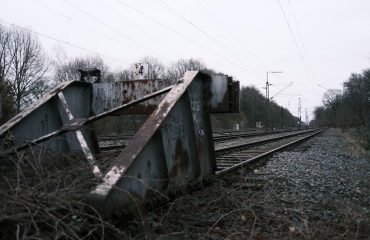Use of Steel Structures in International Projects
Introduction
Steel, a versatile and robust material, plays a pivotal role in numerous international construction projects. Its strength, durability, and relative ease of fabrication have made it a preferred choice for a wide range of applications, from towering skyscrapers and expansive bridges to intricate offshore platforms and complex industrial facilities. This blog post delves into the significant use of steel structures in international projects, exploring its advantages, challenges, and future trends.
Advantages of Using Steel in International Projects
The widespread adoption of steel in global projects stems from several compelling advantages:
- High Strength-to-Weight Ratio: Steel’s exceptional strength allows for the creation of lighter structures compared to other materials like concrete, leading to reduced foundation costs and faster construction times. This is particularly beneficial in seismic-prone regions.
- Durability and Longevity: With proper design and maintenance, steel structures can withstand harsh environmental conditions and last for decades, minimizing lifecycle costs.
- Flexibility and Design Versatility: Steel’s malleability enables architects and engineers to create innovative and aesthetically pleasing designs, catering to diverse project requirements.
- Faster Construction Time: Pre-fabricated steel components can be manufactured off-site and assembled quickly on-site, significantly accelerating project completion.
- Cost-Effectiveness: While initial material costs might seem higher, the overall lifecycle cost of steel structures often proves more economical due to faster construction, reduced maintenance, and extended lifespan.
- Sustainability: Steel is a highly recyclable material, contributing to environmentally friendly construction practices. Modern steel production methods are also becoming increasingly efficient and sustainable.
- Easy Transportation and Handling: Steel components are relatively easy to transport and handle, simplifying logistics and reducing on-site congestion.
Applications of Steel Structures in International Projects
The versatility of steel makes it suitable for a vast array of international projects:
- High-Rise Buildings: Steel frames provide the necessary strength and stability for skyscrapers, allowing for taller and more complex designs.
- Bridges: Steel is a cornerstone of bridge construction, enabling the creation of long-span bridges that cross significant distances.
- Offshore Structures: Steel’s resistance to corrosion and its high strength are crucial for building offshore oil rigs, wind turbines, and other marine structures.
- Industrial Facilities: Steel is used extensively in the construction of factories, warehouses, and other industrial buildings, providing robust and durable structures.
- Stadiums and Arenas: Large-span steel roofs and supporting structures are commonly used in sports venues to provide ample space and accommodate large crowds.
- Transportation Infrastructure: Steel plays a vital role in railway tracks, train stations, and airport terminals.
Challenges in Using Steel Structures in International Projects
Despite its numerous advantages, using steel in international projects presents certain challenges:
- Corrosion: Steel’s susceptibility to corrosion requires careful consideration of protective coatings and maintenance strategies, particularly in harsh climates.
- Transportation and Logistics: Transporting large steel components across international borders can be complex and expensive, requiring meticulous planning and coordination.
- Skilled Labor: Constructing steel structures requires skilled welders, fabricators, and erectors, which can be a challenge in some regions.
- Quality Control: Ensuring consistent quality across the supply chain, from steel production to on-site fabrication, is essential for project success.
- Regulatory Compliance: International projects often require adherence to multiple building codes and regulations, adding complexity to the design and construction process.
- Cost Fluctuations: The price of steel can fluctuate significantly, impacting project budgets and requiring careful financial planning.
Global Best Practices for Steel Construction in International Projects
Successful steel construction in international projects relies on adhering to global best practices:
- Detailed Planning and Design: Thorough planning, including site surveys, geotechnical investigations, and detailed structural analysis, is crucial.
- Quality Assurance and Control: Implementing rigorous quality control measures throughout the entire process, from material sourcing to final assembly.
- Collaboration and Communication: Effective communication and collaboration among all stakeholders, including designers, engineers, contractors, and suppliers.
- Sustainable Practices: Incorporating sustainable design principles, such as using recycled steel and minimizing waste.
- Risk Management: Identifying and mitigating potential risks, such as weather delays, material shortages, and labor issues.
- Local Expertise: Engaging local expertise to navigate local regulations, understand site-specific conditions, and leverage local resources.
Future Trends in Steel Structures for International Projects
The future of steel construction in international projects is marked by several exciting trends:
- Advanced Steel Alloys: The development and use of high-strength, low-alloy steels that offer enhanced durability and corrosion resistance.
- Prefabrication and Modular Construction: Increased reliance on prefabricated steel components and modular construction techniques to accelerate project completion and reduce on-site construction time.
- Digital Technologies: Integration of Building Information Modeling (BIM) and other digital technologies to optimize design, fabrication, and construction processes.
- Sustainable Steel Production: Continued efforts to reduce the carbon footprint of steel production through the use of renewable energy and innovative manufacturing techniques.
- Smart Structures: Incorporation of sensors and other smart technologies to monitor structural health and performance, enabling proactive maintenance and extending the lifespan of steel structures.
Conclusion
Steel structures continue to play a dominant role in international projects, offering a combination of strength, durability, versatility, and cost-effectiveness. By addressing the challenges and embracing best practices, the construction industry can leverage the full potential of steel to create innovative, sustainable, and resilient infrastructure that meets the needs of a growing global population.
“`




